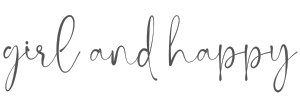This site contains affiliate links, please read our disclosure for more information.
In today’s fast-paced world, staying organized is key to success. Whether you’re a busy professional, a student juggling multiple classes, or a homemaker managing household tasks, having an effective planner organizational tool can make all the difference in keeping your life on track. With a plethora of options available, choosing the right one can be overwhelming. That’s why we’ve compiled a comprehensive guide to help you find the best planner organizational tool tailored to your needs.
Understanding Your Needs:
Before diving into the world of planners and organizational tools, take a moment to assess your needs and preferences. Consider factors such as:
- Lifestyle: Are you a digital enthusiast or do you prefer the tactile experience of pen and paper?
- Schedule Complexity: Do you have a hectic schedule with multiple commitments, or do you need a simpler system for daily tasks?
- Features: Are you looking for basic task management, goal setting features, habit tracking, or a combination of these?
Types of Planner Organizational Tools:
- Traditional Paper Planners:
- Ideal for those who enjoy the sensory experience of writing things down.
- Offers flexibility in customization and doodling.
- Look for layouts that suit your planning style, whether it’s daily, weekly, or monthly spreads.
- Digital Planners:
- Perfect for tech-savvy individuals who prefer digital solutions.
- Sync across multiple devices for easy access anywhere, anytime.
- Many digital planners offer additional features like reminders, color-coding, and integration with other apps.
- Bullet Journals:
- Highly customizable and suitable for creative individuals.
- Consist of blank or dotted pages that allow you to design your own layouts.
- Great for incorporating habit trackers, goal setting, and journaling alongside daily planning.
- Apps and Software:
- Offer a wide range of features from basic task management to advanced project planning.
- Popular apps include Todoist, Trello, Asana, and Evernote.
- Look for apps that sync across devices and integrate well with your existing workflow.
Factors to Consider When Choosing:
- Usability: Choose a planner organizational tool that aligns with your workflow and is intuitive to use.
- Portability: Consider whether you need something compact to carry with you or if digital options better suit your on-the-go lifestyle.
- Customization: Determine how much flexibility you need in terms of layout, color-coding, and additional features.
- Integration: If you rely on other tools or apps for productivity, ensure that your planner can seamlessly integrate with them.
- Cost: Evaluate the cost-effectiveness of the tool in relation to its features and your budget.
Top Picks:
While the best planner organizational tool ultimately depends on individual preferences, here are some popular options across different categories:
- Traditional Paper Planner: Moleskine Weekly Planner
- Digital Planner: GoodNotes (for iPad users) or Notion (for multi-platform users)
- Bullet Journal: Leuchtturm1917 Bullet Journal
- App/Software: Todoist or Trello
Conclusion:
Finding the best planner organizational tool is a personal journey that requires careful consideration of your unique needs and preferences. Whether you opt for the tactile experience of a paper planner, the convenience of digital solutions, the creative freedom of bullet journaling, or the efficiency of productivity apps, the key is to choose a tool that empowers you to stay organized and productive in your daily life. Experiment with different options until you find the perfect fit, and remember that the best planner is the one that helps you achieve your goals with ease and efficiency.



